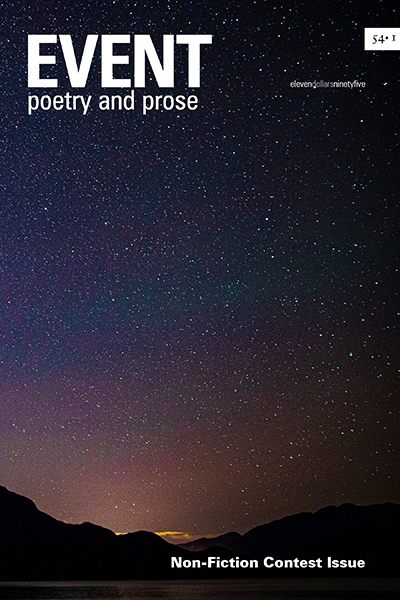Ginny Ratsoy Reviews Novels from Mona Awad and Cary Fagan for EVENT 48/3
Ginny Ratsoy Reviews:

Mona Awad, Bunny, Hamish Hamilton, 2019
Cary Fagan, The Student, Freehand Books, 2019
Mona Awad’s Bunny and Cary Fagan’s The Student are significant additions to the growing body of novels that scrutinize university culture. While Awad opts for a hard hitting, darkly satirical roller-coaster ride in a work that is decidedly 21st century in both style and subject matter, as she dissects a fictional US campus through the somewhat distorted lens of a female graduate student, Fagan takes a more measured, realist/sociological approach to academia. His novel, set in two time periods in a specific Canadian context, features a female protagonist who is at various times both student and professor.
Those who like their narratives first person and their protagonists neurotic and acerbically witty will find Bunny engaging. Samantha Heather Mackey (Smackie) is the only outsider in her small graduate-school cohort in a prestigious MFA program at Warren. Initially she keeps company primarily with Ava, an eccentric art-school dropout on whom she is unhealthily reliant, and secondarily, and somewhat grudgingly, with kindly poet Jonah, an outcast even among his lowly fellow poets, with whom she shares a non-privileged family background. Smackie and Ava are self-appointed small-time saboteurs of the activities of the superficially respectable campus, disrupting campus tours and preoccupying themselves with imaginative rebellions of greater magnitude.
Smackie treats the reader to her world with unbridled, jaundiced, hilarious prose, as when she describes the attendees at a department social:
I have said hello to no one. Not the poets who are their own fresh, grunty hell. Not the new incoming fiction writers who are laughing awkwardly by the shrimp tower. Not even Benjamin, the friendly administrator to whom I usually cling at these sorts of functions, helping him dollop quivering offal onto dried bits of toast. Not my Workshop leader from last spring, Fosco, or any other member of the esteemed faculty. And how was your summer, Sarah? And how’s the thesis coming, Sasha? Asked with polite indifference. Getting my name wrong always. What response I offer—an earnest confession of my own imminent failure, a bald-faced lie that sets my face aflame—will elicit the same knowing nod, the same world-weary smile, a delivery of platitudes about the Process being elusive, the Work being a difficult mistress.
Despite Smackie’s professed disdain for the culture of academia, she is drawn into it by four of her fellow classmates, who dub themselves ‘The Bunnies.’ Wealthy, cloying and alike down to their manicures and choice of exotic vacation spots, the foursome invite her to ‘Smut Salons’ held in their opulent homes. These extensions of their creative writing workshops, in which they act out literary pieces, become increasingly bizarre. As Creepy Doll, The Duchess, Vignette and Cupcake (as Smackie calls them) seduce her deeper into their private world, Smackie’s relationship with Ava unravels. In fact, Smackie herself comes apart—to the extent that she (and occasionally this reader) cannot distinguish between what literally happens in the salons and what is a figment of her imagination. Through this clever literary construct, Awad whirls Smackie’s past around her present, and our protagonist’s carefully constructed self succumbs to social and academic pressures. Awad’s gift at sending up academic pretension, orthodoxy and privilege is matched by her psychological insights.
In an ending both satisfying and credible, Jonah offers a third option, as Smackie realizes that perhaps the seemingly opposite worlds of Ava and the bunnies are not really poles apart, as both depend on cultural norms for their survival. There is something to be admired in practising simple compassion and following one’s own path.
Reflecting on Bunny’s style and the incisiveness of its satire, I am reminded of Maureen Medved’s Black Star, which I reviewed for an earlier issue of EVENT (48.1). Both Medved and Awad thoroughly dissect academic privilege and pretension, and both novels are replete with literary references and detailed critiques of contemporary academic practice and theory.
In The Student, a well-deserved finalist for the 2019 Governor General’s Award for Fiction, a third-person narrative immerses readers in the life of Miriam Moscowitz in two time frames: at length, in 1957, when she is a passionate University of Toronto literature student with academic aspirations, and less extensively in 2005, when we see how personal and societal circumstances have shaped those dreams.
Part One fills in for me a period of Canadian history that I lived through, but was too young to remember, in a way no non-fictional account has matched. In the novel a simplistic Cold War ‘them vs. us’ mindset co-exists with an indignation at injustices against women, Jews, Blacks and other marginalized groups. The Student vividly reminds us that the 1950s was a period of unbridled optimism and blind adherence to the ‘good life’ offered by mechanization and suburbanization—and the embryo of the discontented 1960s.
Fagan lucidly renders the milieu: Toronto generally, and the University of Toronto specifically. The city (still at that time somewhat of a colonial outpost of Britain, but also increasingly a cultural colony of the US) is subtly, but richly, evoked through references such as Britnell’s bookstore, the Eglinton Theatre, The Star and The Globe. Both the compelling earnestness of literary studies and its privileging, exclusionary aspects come alive. For instance, an extended discussion of a production of Sartre’s No Exit, participated in equally by women and men, is counterpointed by a reminder of campus gender segregation: Female students were allowed only in Hart House’s basement, and then only when accompanied by a male. Particularly memorable for me is Miriam’s award-winning essay on a Coleridge poem, replete with intellectual insights, but devoid of any mention of the emotional root of its appeal to her. Fagan is often understated, and admirably balanced, but never at the expense of wit or depth of critique.
Miriam embodies the complexities and apparent contradictions of her time. In her last year of undergraduate studies, she is concretely planning graduate work. That she is becoming herself by experimenting with identities is typical of university students; however, perhaps she is trying on more identities than usual because of societal transition. To 21st-century readers, Miriam’s acts of rebellion might appear minor. However, having premarital sex when abortions were backroom and unwed motherhood brought disgrace upon families, and being unfaithful to a respectable putative fiancé with a misfit American jazz aficionado and civil rights activist took courage in the white-bread 1950s. At the same time, she is the product of a fairly stable, loving and conformist family, so fittingly, she is both an outspoken feminist, determined to reach her academic goals, and a conventional young woman concerned about her appearance and adherence to the respectability of her upper middle-class echelon of society.
Profound disappointment when a beloved professor scorns her ambitions, despite her abilities, is the catalyst for Miriam’s primary attempt at rebellion. In a powerfully rendered illustration of the myopia of aspiring elites, he argues that U of T can only become first-rate by hiring the best men (my emphasis); therefore, she should relinquish her academic dreams for the larger interest. Unmoored and conflicted by the discrepancy between who she is assumed to be and who she aspires to be, she starts a journey to join the American jazz fan (now back home in Arkansas) only to succumb to familial pressure and call a halt to the trip midway. The lure of a relatively safe, secure and predictable milieu overrides the attraction of the unknown.
In a compact 116 pages, Fagan renders an intense, evocative study of a society on the cusp of change and its effects on a determined and relatively privileged young female academic-in-training. In the next section, a slight 59 pages, readers experience a day-in-the life of 70-year-old Miriam through the controlling device of the wedding of her son Michael to another man in the year same-sex marriage became legal in Canada—an excellent frame to highlight societal change since the mid-1950s. That change is also illustrated by the fact that Miriam eventually succeeded in securing a faculty position at U of T (although she relinquished some publication potential when she opted for motherhood as well).
The intermittent decades unfold in an abridged fashion, but the reader does not feel cheated, although the intensity of the first part is perhaps diminished, as action is replaced largely by reflection and planning. Fagan does bridge the gap in an inspired device, in which Michael’s wedding speech depicts the Miriam of the years in between as a spirited and determined fighter for social justice.
The Miriam with whom readers are left is recently retired, engaged with her offspring and, importantly, not cut off from the academic vocation that was her passion in 1957. In addition to maintaining professional ties such as mentoring students, she is on the cusp of fully exploring a thread from those early days in the form of Henry James’s The Ambassadors. Despite the hurdles, academia has enduring value for Miriam Moscowitz. This slim and quiet, yet powerful, rewarding book is one to which I will likely return.
—Ginny Ratsoy













